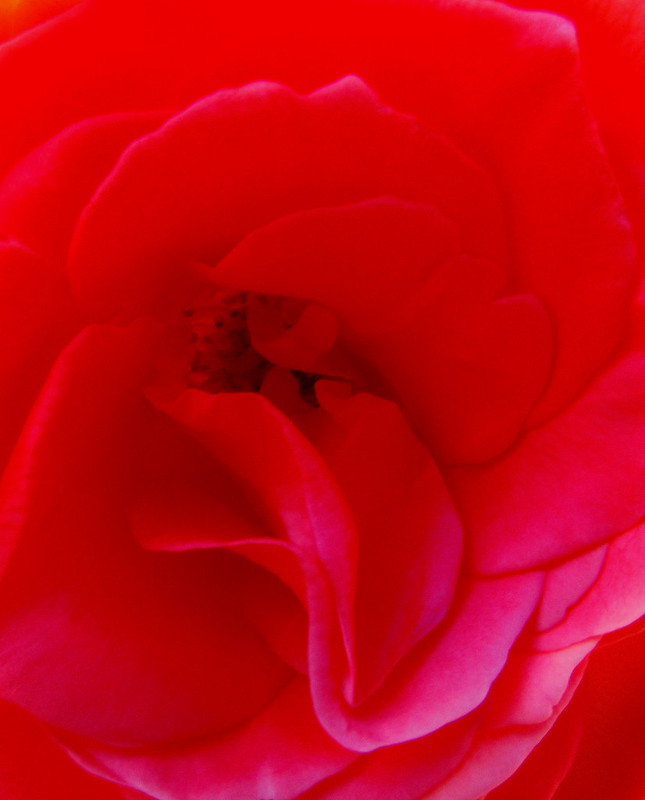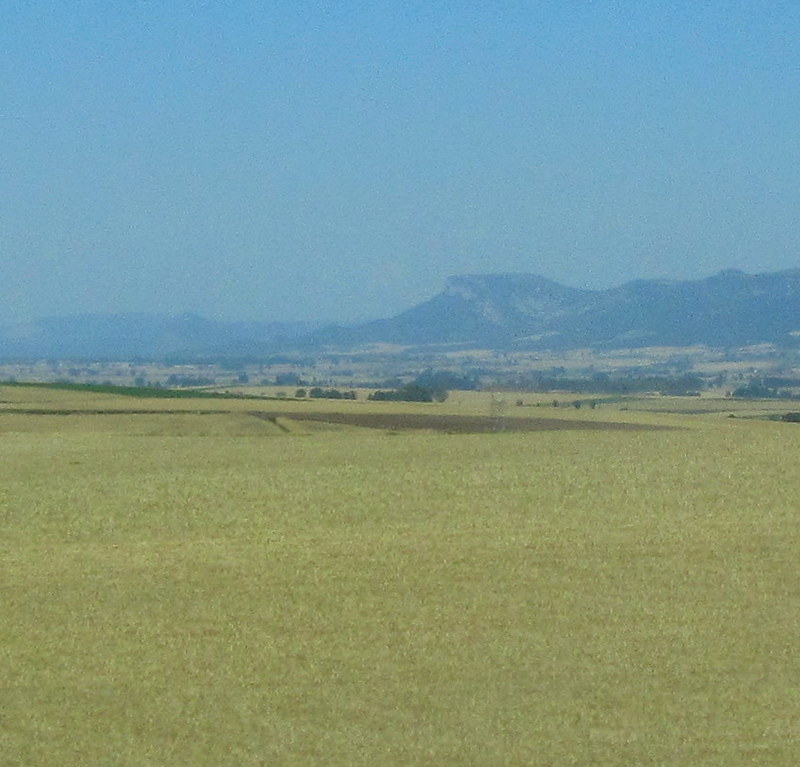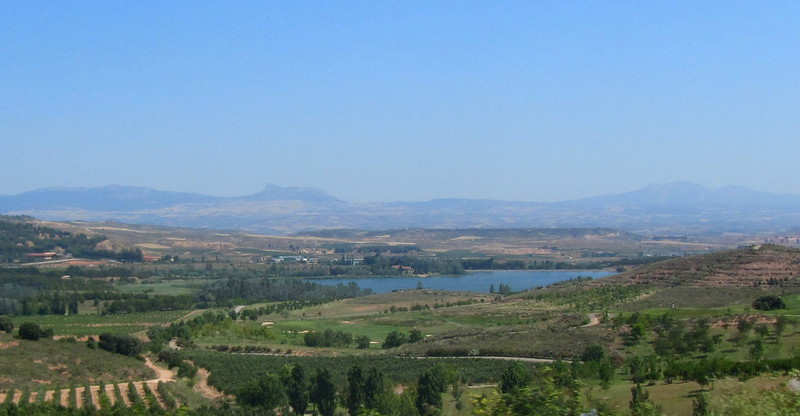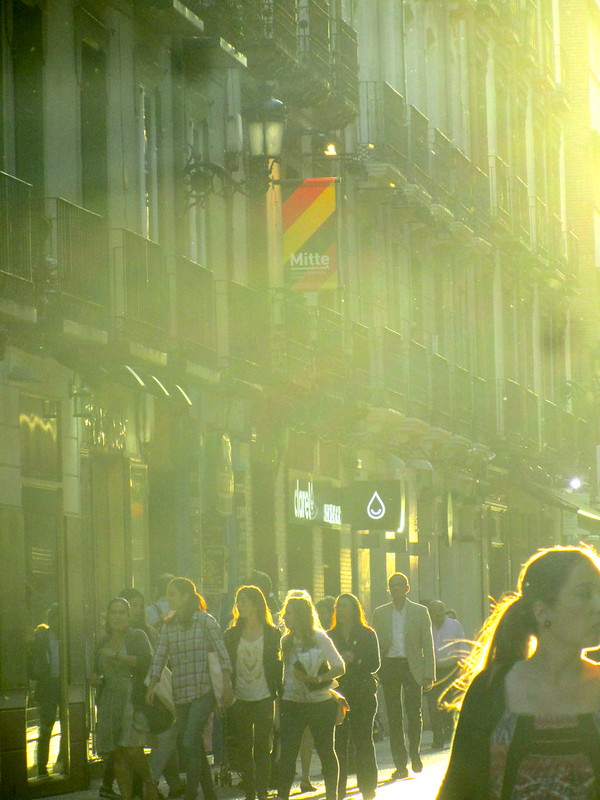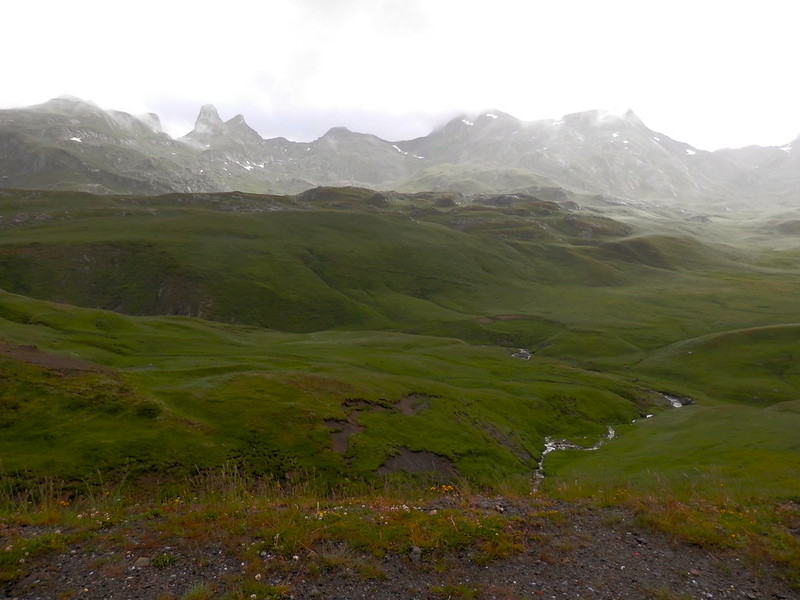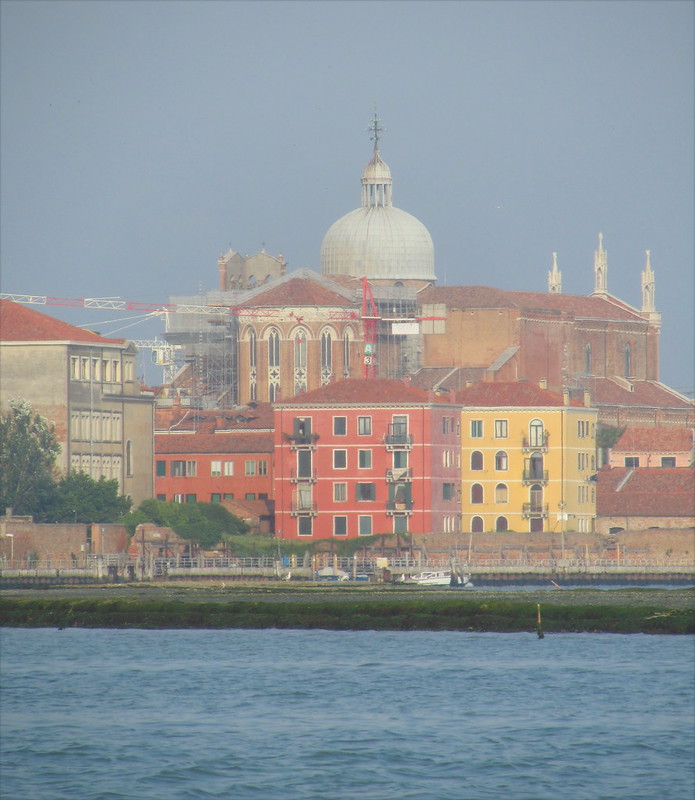From The Princeton Encyclopedia of Poetry and Poetics:
GENRE. The term "genre"is often used interchangeably with "type," "kind," and "form." Western theory on the subject of whether works of literature can be classified into distinct kinds appears at the beginning of literary study and has sustained active controversies in every stage of literary history. Alternately extolled and condemned, praised for its potential for order and ingnored as, finally, irrelevant, the concept takes its tone, in every age, from the particular theory that surrounds it. Theorists approached it prescriptively until about the end of the 18th century, descriptively thereafter; and it retains its viability (if not always its honor) through the plethora of modern comments about the nature of possibilities of literature. But built into its ways of working are difficulties that have ultimately to do with a version of the hermeneutic circle: how can we choose specific works to draw a definition of, say, epic (q.v.) unless we already know what an epic is? Though answered in various ways, the question continues to insinuate itself.
Classical poetics (q.v.) had no systematic theory about the concept of genre. What thinking there is at the beginning of western poetics originates from a distinction made by Plato between two possible modes of reproducing an object or person: (1) by description (i.e. by portraying it by means of words) or (2) by mimicry or impersonation (i.e. by imitating it). Since poetry according to the mimetic theory (see IMITATION; REPRESENTATION AND MIMESIS; POETRY, THEORIES OF) was conceived as such a reproduction of external objects, these two modes became the main division of poetry: dramatic poetry (q.v.) or the theatre was direct imitation or miming of persons, and narrative poetry (q.v.) or the epic was the portrayal of descriptions of human actions.
But since this simple division obviously left out too much, a third division was inserted between the two others (Republic 3.392-94): the so-called mixed mode, in which narrative alternates with dialogue (q.v.), as is usually the case in epic poetry (which is rarely pure narrative). But no new principle of classification was thereby introduced, so no room was left for the genre of self-expression or the lyric (q.v.), in whicvh the poet expresses directly her or his own thoughts or feelings. The extensive use of Homer as a model gave clear if implicit preference to the epic, a point echoed in Laws, which comments effectually mark the beginning of the hierarchy of genres. The classification is as much moral as it is literary. Plato says subsequently that the guardians should imitate only the most suitable characters (395) but that there are impersonators who will imitate anything (397).
Prior to Plato, during the Attic age, we find a wide variety of terms for specific genres: the epic or recited poetry; the drama or acted poetry, subdivided into tragedy and comedy (qq.v.); then iambic or satirical poetry, so called because written in iambic meter (see IAMBIC; INVECTIVE; CHOLIAMBUS); and elegiac poetry (see ELEGY), also written in a distinctive meter, the elegiac couplet (see ELEGIAC DISTYCH), with its offshoots the epitaph and the epigram (qq.v.), all classed together because composed in the same meter. Then there was choral or melic poetry (q.v.), as it was later called, poetry sung by a chorus to the accompaniment of a flute or stringed instrument. Melic poverty comes closest to our concept of the lyric, but it is not divorced from music and it excludes what we consider the essentially lyric genres of the elegy and epigram. In addition, there was the hymn (q.v.), the dirge (q.v.) or threnos, and the dithyramb (q.v.), a composition in honor of Dionysius which could be anything from a hymn to a miniature play. Songs of triumph or of celebration included the paean, the encomium, the epinikion, and the epithalamium (qq.v.) There was certainly plenty of material in Greek poetry to make up a concept of lyric poetry, but the early Greeks apparently contented themselves with classifying by such criteria as metrical form.
The purely extrinsic scheme used for the nonce by Plato is taken up by Aristotle in Poetics ch. 3, where it becomes the foundation of his main classification of poetic genres. Aristotle gives no express recognition of the lyric there, much less in his statement that in the second of these genres the poet "speaks in his own person": that is merely Aristotle's way of saying that the narrative is the poet's own discourse and not a speech by a fictitious character of drama. So the traditional tripartite division of poetic genres or kinds into epic, dramatic, and lyric, far from being a "natural" division first discovered by the Greek genius, is not to be found in either Plato or Aristotle. It was, rather, the result of a long and tedious process of compilation or adjustment, through the repetition with slight variations of certain traditional lists of poetic genres, which did not reach the modern formula of the three divisions until the 16th century.
Nevertheless, Aristotle's classifications of kind in the Poetics make him the source and arbiter of genre study (though often at only second or even third hand, and frequently warped) for nearly two millennia. Like Plato, Aristotle argues that poetry is a species of imitation. The medium of imitation concerns the instrumentality through which the various kinds are presented. The object of imitation, men in action, has both contentual and moral aspects, tragedy and comedy dealing with men as better or worse than they are; but the package is not nearly so neat because Cleophon, though a tragic poet, represents a middle way, men as they are—a significant point which shows how Aristotle's examples can complicate the issue appropriately. On the manner of imitation, Aristotle continues the general Platonic divisions according to the status of the speaker.
All of this supports the view that Aristotle is arguably the first formalist, the first exponent of organic unity (see ORGANICISM); for him, mode, object, and manner, working together, not only make for the "character" of the kind but affect (and effect) all that each aspect does and is. Yet he is a formalist and a good deal more, for his connection of genre with tone and moral stance led not only to later quarrels about decorum (q.v.) and mixed modes but also, and more profitably, about the ways in which texts seek to conceive and appropriate tha world—that is, the difficult business of representation, including his implicit debate with Plato over its possibilities and value.
After Aristotle, it was Alexandrian scholarship that undertook the first comprehensive stock-taking of Greek poetry and began the process of grouping, grading, and classifying genres. Lists or "canons" of the best writers of each kind were made, which led to a sharper awareness of genre. The first extant grammarian to mention the lyric as a genre was Dionysius Thrax (2d c. B.C.), in a list which comprises, in all, the following: "Tragedy, Comedy, Elegy, Epos, Lyric, and Threnos," lyric meaning for him, still, poetry sung to the lyre. In Alexandrian literature, other genres were added to the list, especially the idyll and pastoral (qq.v.).
The Greek conceptions of genre were themselves radically generic in the sense of putting the issues in their elemental forms. What followed—adulation, elaboration, correction, rejection—built on those ways of working. Yet it was clear to later Classicism (q.v.) that these treatises needded supplementary detail, their nearly exclusive emphases on epic and tragedy being insufficient to cover the complex topography of genre. Futher, with the model of the Greeks so potent that there was no thought of undoing their principles, it seemed best not only to elaborate but to clarify and purify, to establish principles of tact which were not only matters of taste (q.v.) but, ultimately, of the appropriate. The Middle Ages, and later, the 17th c., was a time for codification, which could slip easily into rules (q.v.). Quintilian's Institutio oratoria argued for such practices, but most important was Horace's Ars poetica (a name given by Quintilian to the Epistula ad Pisones), a text of extraordinary influence bevcause so many later students read the Greeks through Horace's letter (see CLASSICAL POETICS). The attitudes of Horace were often taken as the classical ways.
Party of the irony is that his letter is not particularly original: its outstanding contribution is the principle of decorum. Aristotle had referred to the interrelation of style with theme, but in Horace this combined with the demands of urbanity and propriety to become the principal emphasis. Tragedy does not babble light verses. Plays ought to be in five acts, no more and no less, with all bloodiness offstage. Plunge into epics in medias res (q.v.), but echo the categories of the strong predecessors either by telling those events or have them acted out. At this distance, Horace comes through mainly as the exponent of a set of mind, one who shourely had much to do with later equations of social and literary decorum. Given his emphasis on "the labor of the file," he is probably best seen as the ultimate craftsman, completer of the Classical triumvirate on which genre study built for most of the rest of Western literary history.
Schlolars are generally agreed that the Middle Ages offered little if any commentary of permanent value on the theory of genre, and they usually cite Dante's remarks in De vulgari eloquentia (ca. 1305) as the major points of interest. In fact though, Dante's account shows a curious transformation of tradition, especially in his insistence that his poem is a comedy because it has a happy ending and is written in a middle style; this sense of "comedy" Dante found in Donatus, De comoedia, and Euanthius, De fabula. Dante argued for a quasi-Horatian decorum of genre and style. In a sense the Commedia culminates medieval mixtures of the grotesque and the sublime (qq.v.), as in the mystery plays (see LITURGICAL DRAMA), but it also suggests, if unwittingly, an undoing of generic norms that was to cause much bitter controversy in subsequent approaches.
As though to counter such implicit subversion, the theorists of the Italian Renaissance focused intensely on genre (see RENAISSANCE POETICS); the rediscovery of the Poetics around 1500 became an impetus to codifications such as had never been conceived even in the most rigorous late Classical formulations. Part of the intensity came from the wide variety of genres and mixed modes such as the prosimetrum (q.v.) practiced in the Middle Ages, leading to the blend of medieval romance (q.v.) and epic in figures such as Ariosto and Tasso. If there were 16th-c. defenders of these "mixed" works—among which tragicomedy (q.v.) was surely the most notorious (Guarini argued in his own defense, but the greatest of the kind were written in England)—there were codifiers such as Scaliger and Castelvetro who had considerable influence well into the 18th century.
Out of these theorists came that ultimate codification, the "unities" of time, place, and action (see UNITY), which was finally put to rest only in the 18th. c. by critics such as Samuel Johnson (see NEOCLASSICAL POETICS). Though they were claimed to have their sources in Aristotle's categories, in fact these arguments distorted Aristotle and carried Horatian conservatism to reactionary lengths. French Neoclassicism continued the codification, quite brilliantly in Boileau's Art poétique, more ambivalently in Corneille's Discours, the latter an apologia for his dramatic practice which is, at the same time, an act of support for the unities. Suggestions that Neoclassical generic hierarchies and standards of decorum have sociopolitical and philosophical implications are, for the most part, convincing: the potential analogies among these favorite subjects ensured their mutual support and offer still another instance of the relations of literature and power. Yet as both literature and society worked their way into romanticism (q.v.), most of those hierarchies shifted: in literature the lyric ascended to the top of the hierarchy, signaling the confirmation of the triad of lyric, epic (i.e. narrative), and drama which is set forth by Hegel and still dominates genre theory. Friedrich Schlegel (in his Dialogue on Poetry [1800] and essay on Goethe [1828]) artued for the abolition of generic classifications, which would in efffect eliminate genre. Schlegel and others had in mind the example of Cervantes, expanding the concept of the novel to speak of it as a package that could carry all other genres within itself, e.g. ballads and romances within tales as in Matthew Gregory Lewis's The Monk and, memorably, Poe's Fall of the House of Usher. International romanticism explored such issues routinely. But when 19th-c. Darwinian biology found application to literature, it produced a rigidly evolutionary theory of genre in Brunetière and others., a dead-end whose main value is that it annoyed theorists like Croce, who considered genres as mere abstractions, useful in the construction of classifications for practical convenience, but of no value as aesthetic categories. Thereby it stimulated interest in grenre theory in the 20th century, one of the great ages of speculation on the subject.
Croce became the case against which theorists tested themselves for much of the early 20th century (see EXPRESSION). If genre classifications have a certain convenience, they nevertheless conflict with Croce's conception of the individual work of art as the product of a unique intuition (q.v.). Genre, in this view, has a merely nominalist existence, a position echoed in varying ways by later theorists as significant and different as Jameson and, in one of his moods, the unclassifiable Frye—though the latter set up an elaborate system of classification which all commentators have taken as another way of talking about genre. Todorov's structuralist attack on Frye resulted in a controversial proposal concerning historical and theoretical genres, but Frye remains the most important theorist of the subject since Croce. Scholars like Fowler have argued eloquently for looser, more historically based readings, recognizing the fact of change and the necessity for flexibility, while concepts like intertextuality (q.v.) obviously have much of importance to say about the workings of genre. Formalists of various persuasions have worried about genre in terms of form-content relations (see ORGANICISM). Drawing on the work of Karl Viëtor, Claudio Guillén distinguishes persuasively between universal modes of experience (lyric, epic, drama) and genres proper (tragedy or the sonnet). Other recent theorists argue for the institutional nature of genre for its functions as a series of codes, and (less convincingly) as an element in a langue-parole relationship, while Fowler and others, working out of Frye, stress the significance of the concept of "mode." Still, Jameson's argument that genre theory has been discredited by modern thinking about literature seems now largely convincing. Recognition of the embodiment of literature in the necessary shifting conditions of culture has led a number of theorists to argue that a genre is whatever a particular text or time claims it to be. Skepticism about universals has clearly taken its toll, as have, in other ways, the arguments of Croce. Such skepticism has appeared among contemporary artists as well, e.g. the performance artist Laurie Anderson and the composer-writer-performer John Cage, who pull down all walls of distinction among genres and media as well as what has been called "high art" and "low art" (Here as elsewhere sociocultural elements cannot be separated from other facets of the work.) Terms like "multimedia" and "intermedia" can be complemented by others such as "intergeneric," such practices denying, in varying degree, the validity of absolute distinctions, categories, and hierarchies. Theorizing about genre has not been so vigorous since the 16th century. The suggestiveness of the 20th century's quite variegated work makes it a period of extraordinary achievement in the history of this stubborn, dubious, always controversial concept. For further discussion of mode and genre see VERSE AND PROSE; see also CANON; CONVENTION; FORM; ORGANICISM; RULES.
JOURNAL: Genre 1— (1968-).
STUDIES: F. Brunetière, L'Evolution des genres. 7th ed. (1922); B. Croce, Aesthetic, tr. D. Ainslie, 2nd ed. (1922); J. Petersen, "Zur Lehre von den Dichtungsgattungen," Festschrift Aug. Sauer (1925); K. Viëtor, "Probleme der literarische Gattungsgeschichte," DVLG 9 (1931), "Die Geschichte der literarischen Gattungen," Geist und Form (1952); R. Bray, Des Genres littéraires (1937); K. Burke, "Poetic Categories." Attitudes toward History (1937); I. Behrens, Die Lehre von der Einteilung der Dichtkunst (1940)—best account of development of genre classification in Western literature; J. J. Donohue, The Theory of Literary Kinds, 2 v. (1943-49)—ancient Greek genre classifications; I. Ehrenpreis, The "Types Approach" to Literature. (1945); C. Vincent, Théorie des genres littéraires, 21st ed. (1951); Abrams, chs. 1, 4. 6; E. Olson, "An Outline of Poetic Theory," in Crane; A. E. Harvey, "The Classification of Greek Lyric Poetry." ClassQ n.s. 5 (1955); Wellek and Warren, ch. 17; Frye; Wimsatt and Brooks; Weinberg, ch. 13; C. F. P. Stutterheim, "Prolegomena to a Theory of Literary Genres." ZRL 6 (1964); B. K. Lewalski, Milton's Brief Epic (1966), Paradise Lost and the Rhetoric of Literary Forms (1985), ed., Renaissance Genres (1986); F. Séngle, Die literarische Formenlehre (1967); W. V. Ruttkowski, Die literarischen Gattungen (1968)—bibl. with trilingual indices, Bibliographie der Gattungspoetik (1973); E. Staiger, Grundbegriffe der Poetik (1968), tr. J. C. Hudson and L. T. Frank as Basic Concepts of Poetics (1991); K. R. Scherpe, Gattungspoetik im 18 Jh. (1968); E. Vivas, "Literary Classes: Some Problems," Genre 1 (1968); H.-R. Jauss, "Littérature médiévale et théorie des genres," Poétique 1 (1970); T. Todorov, Introduction à la littérature fantastique (1970); Genres in Discourse (tr. 1990); M. Fubini, Entstehung und Geschichte der literarischen Gattungen (1971); C. Guillén, Literature as System (1971), chs. 4-5; P. Hernadi, Beyond Genre (1972); F. Cairns, Generic Composition in Greek and Roman Literature (1972); R. L. Colie, The Resources of Kind: Genre Theory in the Renaissance (1973); K. W. Hempfer, Gattungstheorie (1973); R. Cohen, "On the Interrelations of 18th-c. Literary Forms," and R. W. Rader, "The Concept of Genre and 18th-C. Studies," New Approaches to 18th-C. Literature, ed. P. Harth (1974); A. Jolles, Einfache Formen, 5th ed. (1974); G. W. F. Hegel, Aesthetics, tr. T. M. Knox (1975); G. Genette, "Genres, 'types,' modes," Poétique 32 (1977); K. Müller-Dyes, Literarische Gattungen (1978); "Theories of Literary Genre," ed. J. Strelka, special issue of YCC 8 (1978); Special Issue on Genre, Glyph 7 (1980); Special Issue on Genre Theory, Poetics 10, 2-3 (1981); F. Jameson, The Political Unconscious (1981); Fowler—the major modern study; H. Dubrow, Genre (1982); W. E. Rogers, The Three Genres and the Interpretation of Lyric (1983); B. J. Bond, Literary Transvaluation from Vergilian Epic to Shakespearean Tragicomedy (1984); Canons, ed. R. von Hallberg (1984); Discourse and Literature: New Appproaches to the Analysis of Literary Genres, ed. T. A. van Dijk (1984); T. G. Rosenmeyer, "Ancient Literary Genres: A Mirage?" YCGL 34 (1985); Postmodern Genres, ed. M. Perloff (1989).
[By Frederick Garber, T. V. F. Brogan et al.]
—oOo—


